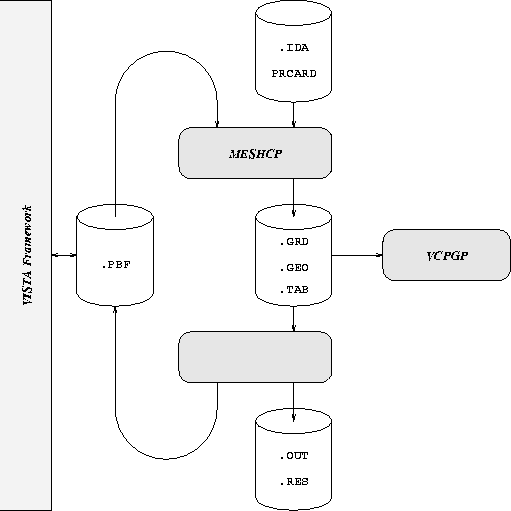
Figure 8.2: Data flow in VISTA-VLSICAP




As discussed already in Section 2.1.1, a conventional tool like VLSICAP can be integrated directly or through a wrapper. Since VLSICAP was developed in-house, and therefore its source code is available, direct integration is the method of choice for integration into the VISTA framework.
VLSICAP was integrated into VISTA just to have a capacitance simulation facility available in the framework, and to demonstrate the data-level integration of a conventional tool. Therefore a minimum-effort data-level and task-level integration was made, without attempting to create a tightly integrated and waferstate-compliant framework tool.

Figure 8.2: Data flow in VISTA-VLSICAP
The minimum requirements for such an integration are the reading and writing of framework compliant (which does not necessarily imply wafer state compliant) data (i.e. PIF in this case), and the ability to call the tool from the user interface. All conventional input and output files are therefore retained (even if they do not make sense in a TCAD framework), and just augmented by the PIF binary file.
The data-level integration was made using the FORTRAN bindings of the PIF application interface by adding an additional PIF input mode to MESHCP, and replacing the output module of VLSICP with a PIF output module. An additional tool (VCPGP, VLSICAP Graphics Processor) for visualizing the intermediate geometry and grid files produced by MESHCP was created, since there was no possibility to visualize those before, although visualization of the geometry and the grids is definitely necessary for VLSICAP, since the geometry may be modified by MESHCP when it inserts additional boundary points, and the resulting grid has to be controlled visually when numerical errors occur in VLSICP.
Fig. 8.2 shows the data flow in VLSICAP after integration into VISTA. The additions after integration are the PBF input and output path, and the availability of VCPGP for intermediate grid and geometry visualization. The data level integration as well as the task level integration of VLSICAP are detailed in the sections below, where the various files and extensions used by the VLSICAP program system are explained.



